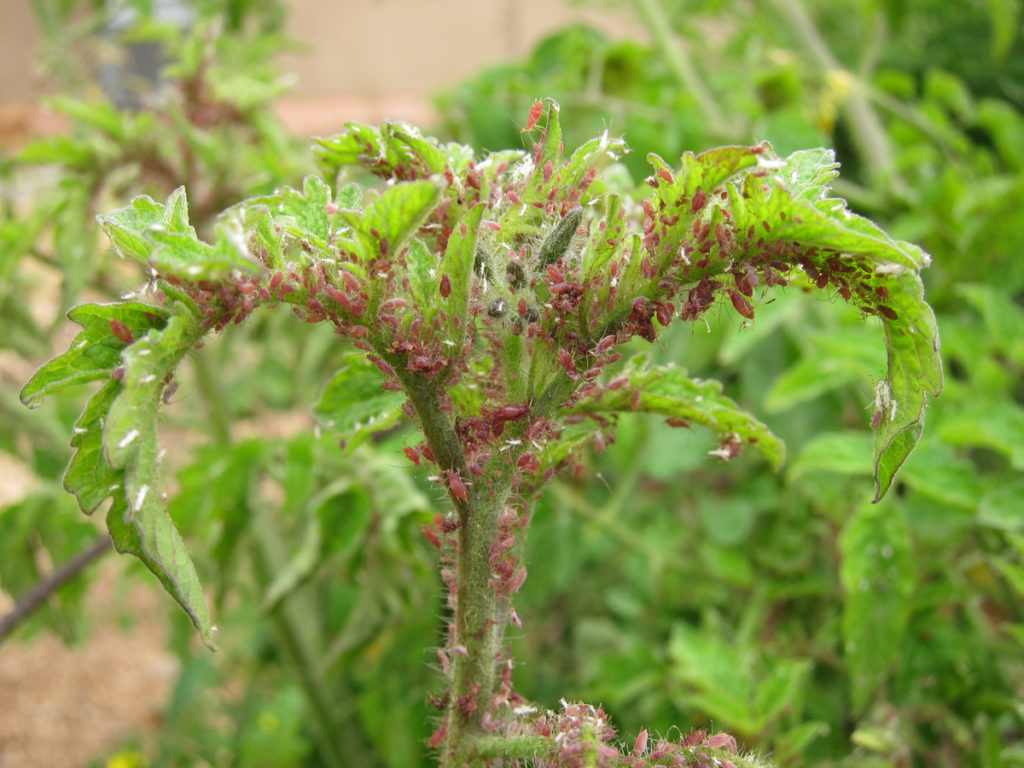
Integrated Pest Management (IPM) is the term we use to describe the methods involved in controlling animals and insects in the garden. Before listing them it is important to point out the following:
1) Not all insects in the garden are harmful. Familiarize yourself with who the good bugs aka beneficials are and those that do the most harm.
Good Bugs – See Meet the Beneficials, a pdf poster from IPM Online, University of California Davis that illustrates the various natural predators and parasites that feed on common garden pests.
Bad Bugs – See Plant Pest Identification Chart from Dept of Entomology, Texas A&M University .
2) Frequent monitoring of your plants is essential. Don’t let a little problem become a big problem. The earlier a problem is addressed the more quickly and easily it can be solved. Careful inspection of your plants should be done on a regular basis. If you’re fortunate enough to own a greenhouse careful monitoring of your pants indoors is recommend as well.
3) Some level of damage can be tolerated. A few wormholes on your leaves is not going to destroy your plant. However if unchecked, and they start feeding on the grow tip the plant will not mature.
These are five methods of IPM:
1) Plant Selection
A healthy plant is better able to withstand its environment than one that is stressed by improper fertilization, irrigation, or being planted out of season. Remember to plant cool-weather crops in the fall (in California) and warm weather crops in the spring.
Plant selection also includes the planting of specialized crops. Some plant varieties are more susceptible to pests than others. Choosing the right variety may be all that is necessary to ensure a healthy plant. For example tomatoes labeled with a VFN designation are better able to resist the diseases caused by Verticillium, Fusarium viruses and Nematodes (microscopic worms that feed on plant roots). This information will be readily available in most seed catalogs.
2) Physical Barriers
A good example of physical barrier is a fence. If deer or rabbits are a problem in your garden the area will need to be fenced. Bury the fence about one foot deep to keep burrowing animals out. If gophers are a problem you will need to place chicken wire below your raised bed. Floating row covers and bird netting are other examples of physical barriers.
Buy Best Home Supplies – BestHomeSupplies.com
3) Traps
Insect traps use pheromones, visual lures or food to attract pests and capture them. Pheromones are the substances female insects use to sexually attract males to them. Visual lures use colors and shapes to attract pests. A good example of a trap is the yellow sticky card that keeps whiteflies off your tomatoes. Aphids and white flies as well as other small flying insects are attracted to the yellow color and are then entrapped in the glue. They are not effective in a very large area but for a small school garden they are effective.
Another example of a trap is to lay a wooden board down in your pathway raised a few inches on one end to attract snails. They will try to hide there during the day. Simply turn the board over and remove the snails.
4) Biological Controls
Biological Controls rely on the use of living organisms called natural enemies or beneficials to eat or kill the pests. Two well-known beneficials are ladybugs and green lacewings.
Another biological control is BT (Bacillus thuringiensis), a microorganism that occurs naturally. It is very effective with worms and caterpillars that congregate on the underside of green leaves such as beets and chard as well as on the leaves of the entire Brassica family. BT is diluted with water and sprayed onto the underside of leaves.
5) Pesticides
Pesticides are used as a last resort. If you must use a pesticide, choose the least toxic yet most effective product that targets the pest but does not also kill natural enemies or is harmful to pets and other animals. Insecticidal soaps usually fit this bill. To learn more about pesticides see National Pesticide Information Center.
For more detailed information on IPM, see Pests Listed According to Vegetable.


Pingback: Growing Broccoli